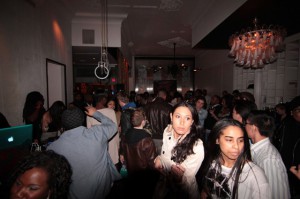The 1978 -79 New Year’s Eve snowstorm was just one of many that winter that combined to produce Chicago ‘ s all-time snowiest winter, delivering 89.7 inches of snow. The city officially logged 7.6 inches of snow Dec. 31 and 0.9 more inches in the post-midnight hours on New Year’s Day — bringing the storm total to 8.5 inches.
Chicago’s coldest winter was the winter of 1903/04, with an average temperature of 18.3 degrees. The winter of 1978/79 was the city’s second coldest ever, with 18.4 degrees. Close Modal.
A total of 16.4 inches fell on the city on Jan. 26 alone, Zochert said. By the end of the storm, 23 inches would blanket Chicago. Abandoned cars.
The 1978-79 New Year’s Eve snowstorm was just one of many that winter that combined to produce Chicago’s all-time snowiest winter, delivering 89.7 inches of snow.
The Great Blizzard of 1978 was a historic winter storm that struck the Ohio Valley and Great Lakes regions from Wednesday, January 25 through Friday, January 27, 1978. It has been cited as having been the worst blizzard in US history.
The Great Blizzard of 1978. Several decades ago, the Ohio Valley and Great Lakes were paralyzed by one of the worst winter storms to ever sweep across the region. Transportation, schools, and businesses were shut down for days. The “Great Blizzard of 1978” dumped vast amounts of snow across the region and caused widespread near-hurricane strength wind gusts that heaped snow into.
The Great Blizzard of 1978
The 67.4 inches of snow makes this the third-highest snowfall for meteorological winter (December-February) Only 1978 (71.2) and 1979 (80.6) had more snow..
They combined extended spells of barbaric cold with snowfalls of 82.3 inches in 1977-78 and the record-breaking 89.7 inches in 1978-79, amounts never before experienced here.
The Blizzard of 1978. A historic nor’easter brought blizzard conditions to New England, New Jersey and the New York City area at the beginning.
More than 21 inches of snow was dumped in Illinois and northwest Indiana over a two-day period. RELATED: Chicago’s top 5 biggest snowstorms..
41 years ago: Massive blizzard of ’79 took over Chicago
Chicago, IL Seasonal Snowfall Amounts from 1884 to present! Weather.gov > Chicago, IL > Chicago, IL Seasonal Snowfall Amounts from 1884 to present! Current Hazards.
At its peak, wind gusts reached speeds of 39 miles per hour. Five people died during the blizzard, with approximately 15 others seriously injured due to conditions created by the storm. One of the five deaths came when a snowplow driver went berserk, hitting 34 cars and ramming a man.
Blizzard of 1979. Nov. 14, 2014. Chicago’s fourth worst snowstorm in city history occurred on January 13-14, 1979, and dumped a whopping 18.8 inches of snow on the city and suburbs.
It all started with a blizzard on New Year’s Eve, which was followed by storm after storm each day until the tops of cars were covered (we couldn’t dig out for six weeks) and what had been sidewalk was reduced to little narrow paths like the one in this photo. Well, 1978-79 was a long time ago, and I have seen a lot of snow storms since then.
Chicago was paralyzed after the infamous blizzard in January 1979. (Credit: CBS) Motorists found themselves snowed in, and transportation was rendered impossible.
A Look Back At 3 Of Chicago’s Worst Blizzards – CBS Chicago
The notorious winter of 1978-1979 remains the snowiest we’ve seen, with 89.7 inches falling. The year before saw 82.3 inches, according to the National Weather Service. As of Tuesday morning, Chicago is at 43.9 inches this winter at O’Hare Airport, the official measuring location in.
Rounding out the top five are the 20.3-inch storm of Jan. 12-14, 1979, commonly just called the “Blizzard of ’79,” and now the 19.3 inches that fell.
These snowfall extremes were measured at Chicago‘s Midway Airport and go back to 1942. Since then, the most amount of snow to land in one day at Chicago is 17.6 inches (44.7 centimetres) on January 2, 1999. Most snow to fall in one day during recent years in.
1977-1978 by STANLEY A. CHANGNON, JR., and DAVID CHANGNON Title: Record Winter Storms in Illinois, 1977-1978. Abstract: The Midwest, including Illinois, experienced in 1977-1978 its most severe winter since weather records began in the early Nineteenth Century. Illinois had a record-breaking number of 18 severe winter storms; 4 such storms is normal.
The Blizzard of 1979. According to the U.S. Department of Commerce Weather Bureau, Chicago’s average annual snowfall is 33″ and rarely exceeds 40″. Since records began to be kept in 1899, there have only been four winters in which total snowfall exceeded 60″. But during the winter of 1978-79, the total was a staggering 88.4″!.
Chicago ”L”.org: Mishaps & Unusual Occurrences
severe winters in 1976-1977, 1977-1978, and 1978-1979 led to a series of investigations of them (Changnon and Changnon, 1978; Changnon et al., 1980). These assessments concluded that the winter of 1977-1978 was the worst of the 20th Century in Illinois, and that of 1978-1979 was the second worst.
Madison broke a record that had stood for nearly 100 years, gathering more than 76 inches of snow that during the winter of 1978-79. Oshkosh saw more than 87 inches. Using a guide that puts weather and no more than 35 degrees and snow at a depth of more than an inch, it’s estimated the winter of 1978-79 lasted 123 days in the central part of.
In the 1978-79 winter season, however, the city recorded 89.7 inches of snow. As of Tuesday, Chicago has reported nine straight days of measurable snowfall recorded at O’Hare Airport.









